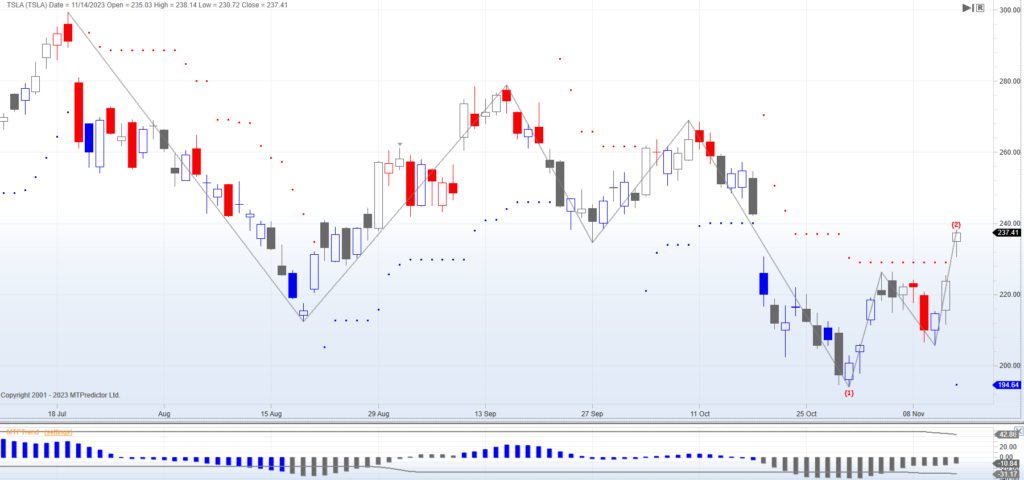
Tesla (NASDAQ: TSLA) shares have experienced a nearly 50% decline from their peak, bringing the company’s market capitalization to $660 billion. Over the past two years, Tesla, once a prolific wealth generator, has lagged significantly behind broader market trends. Notably, the stock soared by an astonishing 32,000% from its IPO in July 2010 to November 2021.
Like many other companies, Tesla has grappled with various challenges in recent quarters, including the impact of rising interest rates, inflation, disruptions in the supply chain, a slow macroeconomic environment, and reduced consumer spending. These factors have adversely affected both revenue growth rates and profit margins for the electric vehicle (EV) giant.
In the third quarter of 2023, Tesla reported revenue of $23.35 billion and adjusted earnings of $0.66 per share. Analysts had anticipated higher figures at $24.1 billion in revenue and $0.73 per share in earnings for Q3. While sales exhibited a 9% year-over-year growth, gross profits witnessed a 22% decrease, and operating profit narrowed by 52%.
Elon Musk, the CEO of Tesla, expressed concerns about the impact of rising interest rates on the cost of debt, emphasizing that higher rates make it more challenging for consumers to afford Tesla’s vehicles.
Despite ongoing efforts to expand its portfolio of battery-powered vehicles, Tesla faces increasing competition from both new entrants and established manufacturers, adding headwinds to the company’s trajectory. The production of the Cybertruck remains on schedule, with the first deliveries expected on November 30th. However, this segment is projected to remain unprofitable for at least a year after production.

Tesla, once enjoying a first-mover advantage and economies of scale, saw its margin advantage erode over the past year. Despite a 9% increase in sales in Q3, various key financial metrics declined:
Cost of Goods Sold (COGS) increased by 18%
Operating income fell by 52%
GAAP EPS fell by 44%
Free cash flow also declined by 74% to $848 million compared to the same period the previous year. Lowering average selling prices, coupled with investments in projects like the Cybertruck and artificial intelligence, are contributing to the pressure on Tesla’s bottom line.
In contrast, legacy auto manufacturers, such as Ford and Mercedes-Benz, are grappling with challenges in the EV market. Higher pricing environments have led to a substantial decrease in consumer demand for EVs in the last 18 months. Some manufacturers are even selling their EVs at a loss to maintain market share.
Analysts project a 26.3% narrowing of Tesla’s adjusted earnings to $3 per share in 2023, indicating a forward price-to-earnings ratio of 70x. This valuation appears steep for a company facing challenges in consistently posting profits.
With new entrants and established players crowding the EV space, Tesla’s ability to rapidly grow its top line is diminishing. The focus on affordability to counter rising interest rates has led to narrower cash flows and profit margins. Consequently, analysts anticipate a significant downward movement in Tesla’s valuation over the next 12 months, with a potential drawdown of over 40% from current levels, reaching $400 billion if certain cash flow projections materialize.
